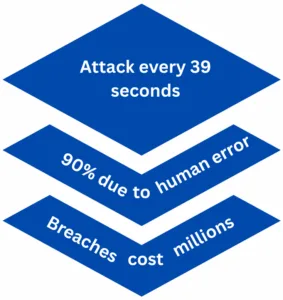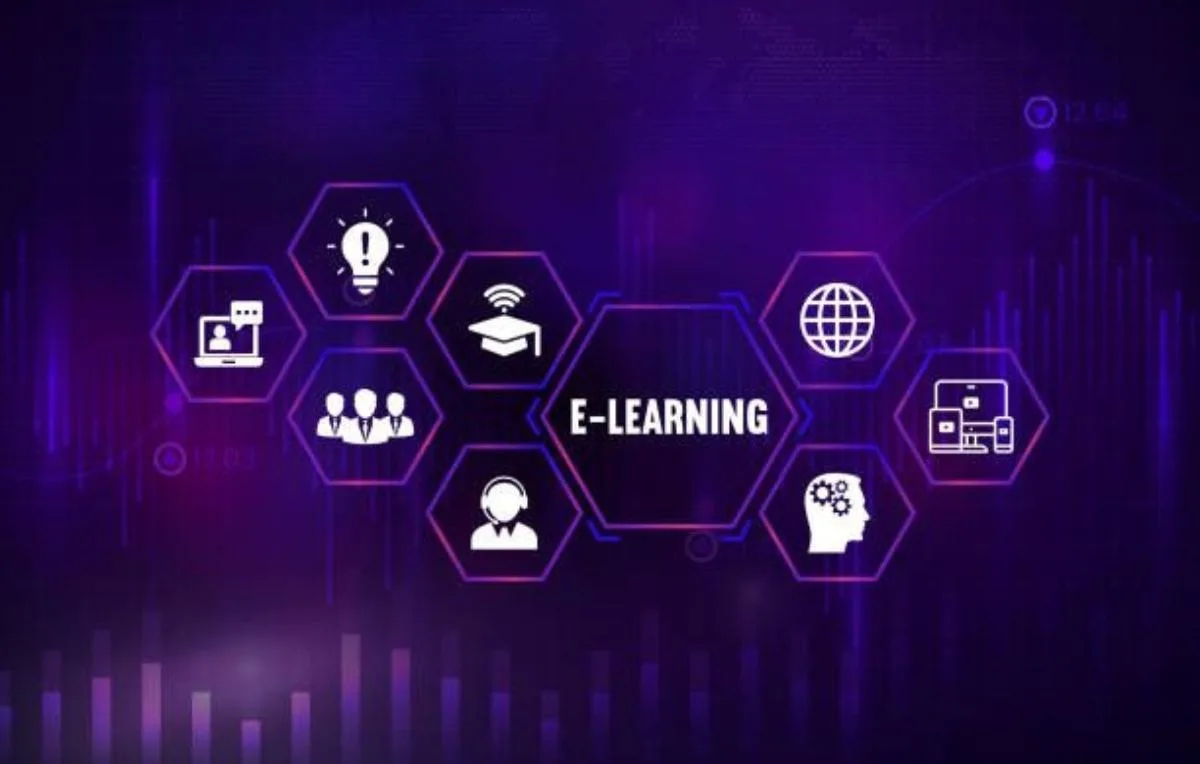Hackers Evolve Daily – Are Your Customers Learning Fast Enough?
Every day, hackers invent new tricks. They adapt to security defenses, share tools on underground marketplaces, and leverage technologies like artificial intelligence to launch more convincing attacks. Cybercrime has become a fast-moving business, and organizations across industries are struggling to keep pace. But the uncomfortable truth is this: even the strongest security technology is only as effective as the people who use it.
That reality shifts the question from how secure are our systems? How prepared are our people and by extension, our customers?
For years, the conversation around cybersecurity has focused primarily on employees. Companies invest in workforce training programs, simulations, and compliance checklists to ensure that their internal teams don’t fall prey to phishing emails or weak passwords. This is vital, but it overlooks a critical dimension: customers themselves. When your product or service touches sensitive data, financial transactions, or shared networks, customer behavior directly influences the security of your brand. If they aren’t learning fast enough to recognize threats, your defenses are only halfway complete.
This is why forward-looking businesses are embracing customer education as an essential layer of cybersecurity. And increasingly, they are turning to Learning Management Systems (LMS) to deliver it. A modern LMS doesn’t just provide static training materials, it enables ongoing, adaptive learning that evolves as quickly as hackers do.
The Escalating Pace of Cyber Threats
To understand why customer learning is so urgent, consider the pace at which threats multiply. Once upon a time, phishing emails were riddled with typos, fake bank logos, and broken links. They were easy to spot. Today, criminals use AI-driven language models to craft messages indistinguishable from legitimate business correspondence. Sophisticated social engineering campaigns exploit trust between customers and brands, creating emails or SMS alerts that look exactly like your own support messages.
Meanwhile, the rise of ransomware-as-a-service has lowered the barrier to entry for would-be attackers. A hacker no longer needs deep technical knowledge; they can simply purchase prebuilt exploit kits on the dark web. Zero-day vulnerabilities unknown flaws that attackers exploit before patches are available emerge regularly, creating gaps even seasoned security teams scramble to close.

Threats are accelerating, and human error remains the primary gateway.It’s not enough for customers to learn once. They need to learn continuously, in ways that match the pace of this dynamic threat landscape.
Why Customers Matter as Much as Employees
It may feel natural to focus on employee training first. After all, staff are inside your systems daily, managing data and accessing applications. But customers can be just as critical to the integrity of your security ecosystem.
Think of a financial services app where encryption and fraud monitoring are state of the art. Those protections crumble, however, when a customer reuses a weak password across multiple platforms, connects via unsecured public Wi-Fi, or clicks on a phishing text that looks like a bank alert. In each case, the breach is not the system itself, it’s the user’s behavior.
Or consider a SaaS platform. Even if the vendor has rigorous security protocols, a customer misconfiguring cloud permissions can inadvertently expose sensitive data to the public internet. The company may not have caused the mistake, but the brand will suffer the fallout.
Real-world examples like these highlight a simple truth: customer actions influence brand risk. Neglecting their education leaves openings hackers are eager to exploit.
The ROI of Security Awareness
A common question arises: how do we measure the return on investment in awareness training? After all, it’s hard to quantify incidents that didn’t happen.
While no organization can run a controlled trial where only half the users are trained, there are ways to demonstrate value. Comparing incident rates before and after awareness programs offers insight into their effectiveness. More importantly, when you weigh the relative costs, the case is compelling: a single breach can cost millions, while training initiatives are relatively inexpensive.
Beyond financial ROI, awareness delivers other benefits:
- Cultural impact: Training builds a security-first mindset, reinforcing good habits until they become second nature.
- Stronger defenses: Technology alone cannot guarantee safety, firewalls need to be activated, MFA must be enabled, and warnings must be heeded. Education makes the technology work as intended.
- Customer confidence: In an era where nearly 70% of consumers believe businesses are falling short on cybersecurity, demonstrating proactive training can set your brand apart.
- Regulatory compliance: Many industries require proof of training efforts. While compliance shouldn’t be the sole motivator, effective programs naturally help organizations meet these obligations.
Why Traditional Approaches Fall Short
Organizations have tried a variety of training approaches over the years. Classroom-based sessions allow for direct interaction but are resource-intensive and infrequent, making them poorly suited to the speed of cyber threats. Posters, handouts, and visual campaigns raise awareness but fade into the background over time. Phishing simulations, while powerful when done well, risk alienating users if executed poorly.
Even computer-based training, flexible and scalable, often devolves into compliance checkboxes rather than tools for lasting behavior change.
The common shortcoming across all these methods is adaptability. Hackers don’t operate on quarterly schedules. They innovate daily. Training that cannot keep pace risks becoming outdated as soon as it’s delivered.
The LMS Advantage in Cybersecurity
This is where an LMS changes the game. Far from being a static training library, a modern LMS offers capabilities that align perfectly with the needs of cybersecurity education.
- Scalability: Deliver training modules to thousands or millions of customers at once, ensuring consistent messaging across regions and markets.
- Just-in-time learning: Provide micro-courses exactly when users need them. Imagine a three-minute refresher on two-factor authentication appearing right as a customer sets up their account.
- Engagement: Through gamification, badges, points, leaderboards and interactive simulations, LMS platforms turn otherwise dry content into memorable learning experiences.
- Analytics: Dashboards reveal who has completed training, how they performed, and where gaps remain. This allows organizations to identify at-risk groups and adjust content accordingly.
- Continuous updates: New modules can be added instantly when emerging threats arise, keeping customer knowledge as current as hacker tactics.
Customer Learning as a Brand Differentiator
Defensive benefits aside, customer education also represents a unique competitive edge. Most businesses market their security features, encryption, compliance certifications, firewalls, but very few extend that protection by actively empowering their customers.
When customers feel confident that they can navigate security risks while using your product, they trust your brand more. That trust translates into loyalty, higher satisfaction, and positive word-of-mouth. In industries where customers face constant anxiety about security, such as finance, healthcare, or SaaS, a proactive learning experience can become the deciding factor in choosing your product over a competitor’s.
In essence, security education is not just a safeguard. It’s a differentiator.
A Practical Example
Imagine a financial institution launching a new mobile app. The app itself uses best-in-class encryption, but most vulnerabilities stem from customer behavior: poor password practices, phishing links, or unsafe Wi-Fi.
Here’s how an LMS addresses those risks:
- At onboarding, the app prompts customers to complete a short, engaging tutorial on secure account setup.
- When phishing scams targeting the bank emerge, the LMS automatically recommends a new micro-course to help customers recognize them.
- Customers earn rewards, discounted fees, loyalty points for completing training, encouraging both participation and retention.
- Analytics reveal which customers skipped training, enabling targeted reminders.
Instead of reacting to a breach, the company proactively reduces risk while simultaneously strengthening customer trust.
Steps to Implementing a Customer-Facing LMS
For organizations ready to integrate customer learning into their cybersecurity strategy, the roadmap is clear:
- Identify key risks. Start with foundational topics like password hygiene, phishing awareness, device security, and data privacy.
- Select the right platform. Look for LMS solutions that support microlearning, mobile access, gamification, and strong analytics, and ensure they integrate with your existing systems.
- Develop engaging content. Replace dense manuals with short videos, interactive quizzes, and real-world simulations.
- Personalize the journey. Use automation to tailor content so that customers only receive training relevant to their context.
- Measure and refine. Track completion rates, performance scores, and user feedback to continuously improve training effectiveness.
The Bottom Line
Hackers evolve daily, but too often, customer learning remains static. In the race between cybercriminal innovation and human preparedness, organizations can no longer afford to overlook the customer dimension of security.
By leveraging an LMS, businesses can deliver adaptive, engaging, and scalable education that keeps customers informed and vigilant. The result isn’t just fewer breaches, it’s stronger trust, greater loyalty, and a competitive advantage that competitors will struggle to match.
Your customers don’t just need your product. They need your guidance. And in a world where cyber threats never rest, the companies that help customers learn as fast as hackers evolve will be the ones that thrive.







